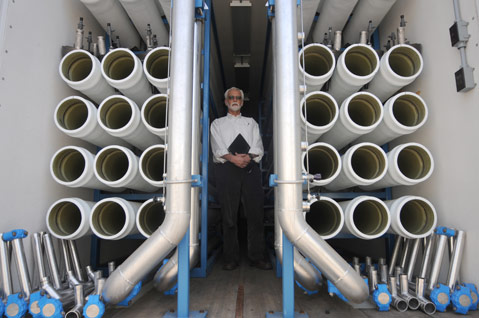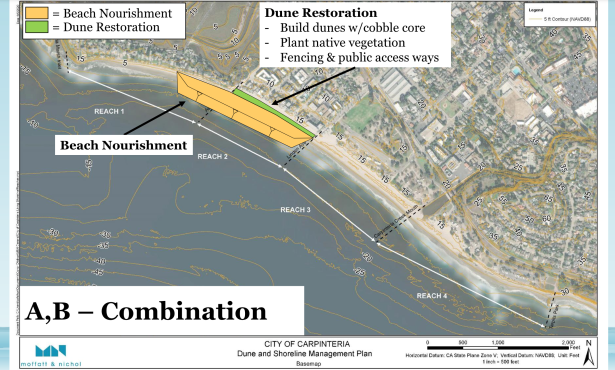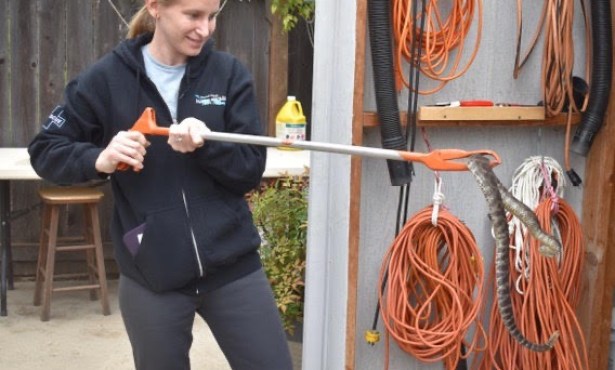Desal Time Travel
City Plant Gets Green Light from State Water Board

In the realm of physics, time travel still remains light years away. But in the world of politics, it happened just last week in Santa Barbara when the Central Coast Regional Water Quality Control Board travelled 24 years back in time to fix a potentially lethal glitch in the permit that agency first bestowed on the City of Santa Barbara’s desalination plant. Without this change, the city would not have been able to reactivate its long dormant plant by the year 2017 in response to the intense drought wracking California. Absent serious rainfall, city planners contend the plant will prove essential at that time to meet basic water demand.
Back when the desal plant was first permitted, two key findings needed to be made for the approval to legally stick. Only one was. Glaring by its absence was the required determination that the plant’s impact on sea life had been mitigated to the maximum extent feasible and that all alternatives had been carefully considered. For some of the boardmembers, this proved procedurally awkward. For Kira Redmond, executive director of Santa Barbara Channelkeeper, it was considerably worse than that.
“You can’t contrive a retroactive determination of compliance now based on information that’s 24 years old,” Redmond argued. “Desal technology has changed as has our knowledge of the harmful impacts of open ocean intakes on the marine environment.” Redmond and advocates from a host of other environmental organizations have insisted that subsurface intake technology — in which pipes are buried beneath the ocean floor — are far more benign to the marine environment. City Hall, she said, needed to seriously commit to studying such an approach. The regional water board, she added, needed to insist. To do otherwise, she threatened, “begs a legal challenge.”
Redmond’s was just one of several barely sheathed legal threats at play. The statewide water board — as opposed to the regional board — recently drafted language for a sweeping new policy to deal with new and expanded desalination plants. Under the language of this plan, any plant lacking a finding about seawater intake precautions would be deemed “new.” Santa Barbara officials argued forcefully they should not be bound by this new policy, and the message was clear: City Hall would take the state board to court if need be.
To address the concerns of Redmond and other environmentalists, Santa Barbara city water czar Josh Haggmark and his boss, public works chief Rebecca Bjork, voluntarily proposed three eco-friendly palliatives. First, they offered to cover the intake pipes with tight wire screens to prevent all but the tiniest of sea creatures from getting sucked inside. In addition, the velocity of the pumps would be kept sufficiently weak that no fish could get pinned up against the screens. Beyond that, Haggmark and Bjork offered to donate $500,000 in mitigation money to underwrite the cost of restoring the Devereux Slough.
Lastly — and most importantly — they agreed to explore subsurface intake alternatives, not to mention the possibility of injecting highly treated sewage water into the city’s underground storage basins, a program known colloquially as “From Toilet to Tap.” Currently, Santa Barbara’s wastewater treatment plant flushes roughly 7 million gallons of treated water out to sea a day.
Those offers, by themselves, were not enough. Some boardmembers worried the mitigation money seemed arbitrary and disassociated from any precise understanding of what impact the intake pipes actually had. And how, they asked, would restoration work in the Goleta Slough offset impacts felt off the coast of Santa Barbara? Legal Armageddon was averted only when the regional board voted 5-2 to make City Hall’s voluntary offers mandatory and include them as conditions of approval for the existing permit.
For a while, it wasn’t clear that would suffice. What had been heralded beforehand as a slam-dunk rubber stamp became a bona fide nail-biter as the deliberations ground on. Boardmembers argued the alternatives study needed more teeth. If the study concluded subsurface alternatives were feasible, then City Hall should be bound to pursue them at a later date, they argued. City Hall balked at that. More importantly, the State Water Quality Control Board balked, too, dispatching one of its highest ranking legal chiefs to quell such talk.
The board’s time travelling act last week probably didn’t make anyone really happy. But initial reviews indicate it might have been good enough. “In the end, we got a good result,” said Redmond. Haggmark may have lost a few hours of sleep, but in the end, City Hall was forced to do only what it had already agreed to. ”It’s not like we’re hoodlums looking to destroy the environment,” he said.



